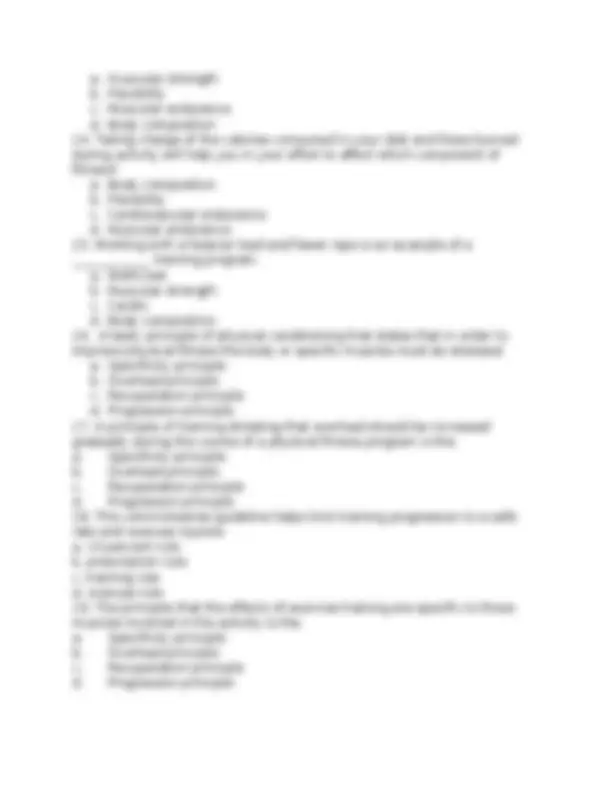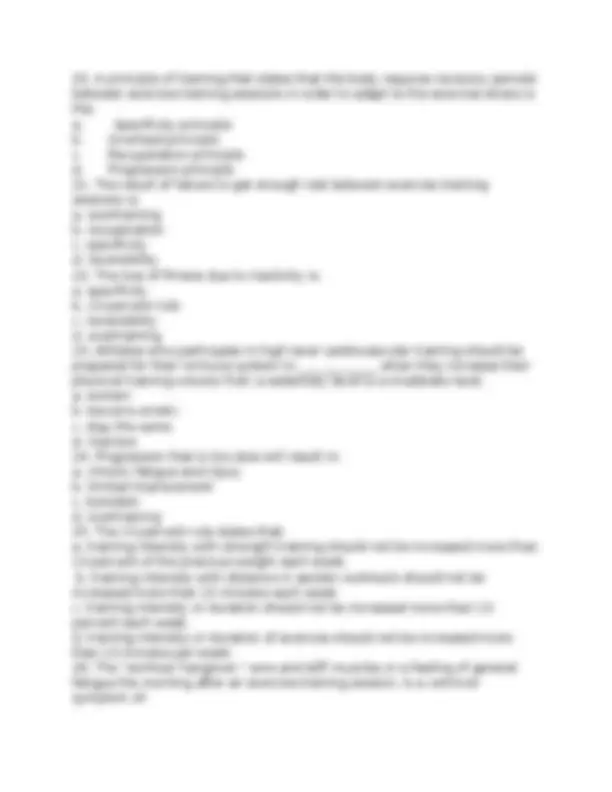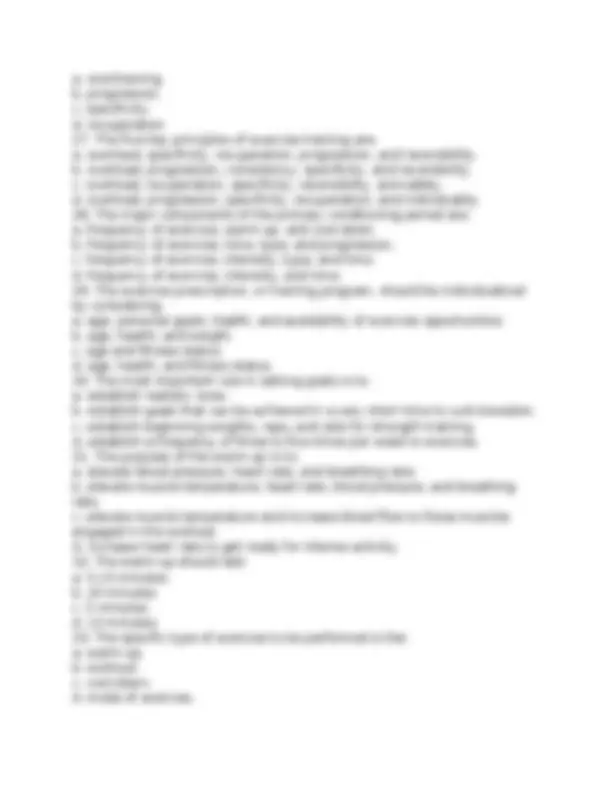





Study with the several resources on Docsity

Earn points by helping other students or get them with a premium plan


Prepare for your exams
Study with the several resources on Docsity

Earn points to download
Earn points by helping other students or get them with a premium plan
Community
Ask the community for help and clear up your study doubts
Discover the best universities in your country according to Docsity users
Free resources
Download our free guides on studying techniques, anxiety management strategies, and thesis advice from Docsity tutors
What is physical fitness PE 1? Physical Education 1 (PE 1) with a descriptive title ,physical fitness is intended to equip students with the knowledge of a systematic approach of improving and maintaining the level of fitness and wellness in their daily lives by adopting and maintaining healthy lifestyle.
Typology: Exams
1 / 7

This page cannot be seen from the preview
Don't miss anything!




Mahogany St. Rabe Subdivision, Visayan Village, Tagum City Tel Fax (084) 226-0127 CP No.:0917-638- Email:tdciinfocenter@gmail.com PE 1 – PRELIM EXAMINATION
a. Intensity b. progression c. specificity d. Recuperation
a. overtraining. b. progression. c. specificity. d. recuperation
Prepared by: BENJIE F. GOOD, LPT